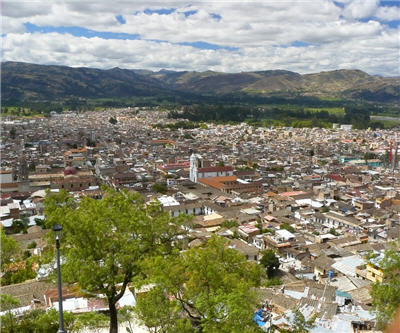Peru to spend $1.6 billion on Cajamarca’s poor, Newmont could restart Conga in March

The Wall Street Journal reports Peru on Friday announced a programme of social and infrastructure investments in its poor Cajamarca region aimed at winning over local protesters who have brought to halt Newmont Mining’s $4.8 billion Conga project over environmental concerns.
Protestors, led by Cajamarca’s Maoist governor Gregorio Santos, say Conga will destroy the environment by transforming four high Andean lakes into reservoirs for mining operations.
In December the government was forced to declare a state of emergency after boulders were used to block exits from the regional capital of more than 200,000 inhabitants, schools, hospitals and business were closed and dozens injured in clashes with police.
The Wall Street Journal reports Peru’s new Prime Minister, Oscar Valdés, who was elevated to the position after a cabinet shake-up prompted by the Conga crisis said late Thursday that he thought work on the project which was stopped in November could restart by March:
On Friday, René Cornejo Diaz, the housing minister, was sent to Cajamarca to tout the federal government’s program to invest 4.3 billion soles, about $1.6 billion, in infrastructure and expanded antipoverty programs in Cajamarca.
But Cajamarca leaders, including the governor, Gregorio Santos, didn’t seem likely to be swayed by government largess. “The position of the regional government is clear, Conga is not going ahead,” Máximo Léon, a top adviser to Mr. Santos, said in a telephone interview.
Conga has gold deposits worth about $15 billion at current prices and would be the biggest investment ever in Peru mining.
Conga has turned into a political nightmare for President Ollanta Humala who took office last year and who has on many occasions publicly backed the project. The bitter dispute is seen as a test case for scores of conflicts triggered by mining investments in the country.
At least 200 communities nationwide in Peru have organized to stop mining or oil projects, usually over environmental concerns or to demand direct economic benefits in rural towns.
{{ commodity.name }}
{{ post.title }}
{{ post.date }}

5 Comments
inOr
So, who’s footing the $1.6bn bill for pacifying the locals? Newmont, or the Peruvian taxpayers?
Tunico
enough is enough, too much corruption between newmont and the peruvian government. It is time for newmont to review its approach to local communities in that area.
Matt
Extortion by people who see something being built and want a piece of the action. Newmont is designing an environmentally sound project and has passed eveyr environmental hurdle and legal requirement. Enough already with the green smokescreen. If you want the “share the wealth”, then do what every free citizen does, buy shares.
Eschomb
The agressive reaction of the “Green Groups” around the world are doing many damages to the poor regions. Today Mining activity is clean and respectful with the environment according with international laws and specifications. The tragic-funny thing is all the protests to the Mining are organized by people from “well developed” countries mainly from Europe and leave the poor Southamerican communities where the mines will be installed, without opportunities to grow and develop, to ha potable water, electricity, sanitary services, education, etc., …..and when they, “the greens”, obtain there objectives, return to there countries, to their excellent standard of life and foget the people, the country, the community where they do their business……unacceptable.
Education4everyone
I am Canadian and I have lived in Cajamarca, it is absolutely disgusting how people live, and how there is a lack of water and electricity on a regular basis. In my apartment, the water was shut off for an entire week! The Cajamarquinos has every right to fight to stop this project if it any way it make their bad situation much worse. Cajamarca is the second poorest community in Peru, yet has one of the richest mines nearby making a fortune. It is unfair to the residents. There is much corruption within the Peruvian government, however, the residents have to make a stand at some point, they should not be forced to live within their low level of living standards because the government and the mine want to keep making fortunes and leave them behind, which happens to many of the poor peruvian communities.